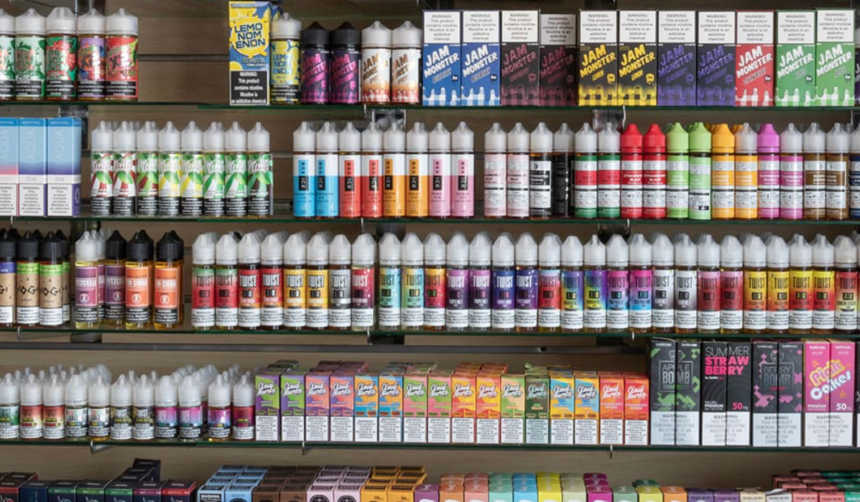In recent years, vaping has become an increasingly popular alternative to traditional tobacco products across Europe, and around the world. With its undeniable appeal to both current smokers seeking less harmful options and a new generation of users, the e-cigarette market has experienced growth at an unprecedented rate. However, this surge in popularity has also raised significant public health concerns, particularly regarding the safety of vape liquids and their potential impact on young people and non-smokers.
- Key Regulations Under the Tobacco Products Directive
- Maximum Nicotine Concentration
- Container Size Restrictions
- Ingredient Transparency
- Labelling and Packaging
- Compliance and Notification Requirements
- Safety and Quality Requirements
- Reporting Obligations
- Product Testing Requirements
- Flavour Restrictions
- The Benefits of European Standards for Consumers
To address these concerns, the European Union introduced the Tobacco Products Directive (TPD), a comprehensive regulatory framework designed to ensure that vaping products meet stringent safety and quality standards. The TPD encompasses a wide range of regulations that govern everything from nicotine concentrations to packaging requirements. At the heart of these regulations is a focus on limiting youth access to vaping products and reducing the risk of nicotine addiction.
This article delves into the key aspects of European standards for vape liquids, highlighting how these regulations are designed to safeguard public health.
Key Regulations Under the Tobacco Products Directive
The TPD outlines several critical regulations that manufacturers and retailers must adhere to when producing and selling vape liquids. These regulations are designed to safeguard consumers while promoting responsible use of vaping products.
Maximum Nicotine Concentration
Perhaps the most prominent aspect of the TPD is the limitation on nicotine concentration. E-liquids containing nicotine must not exceed a concentration of 20 mg/ml. This limit is designed to reduce the risk of nicotine addiction and its associated health risks, particularly among young people and non-smokers. By capping nicotine levels, regulators aim to create a safer environment for those transitioning from traditional tobacco products.
Container Size Restrictions
The TPD also imposes restrictions on the size of containers for e-liquids. Specifically, it stipulates that refill containers must not exceed 10 ml, while cartridges should not exceed a maximum capacity of 2 ml. These measures aim to prevent excessive consumption of nicotine in a single session and enhance product safety. In addition, smaller container sizes encourage users to purchase more frequently, which can help in monitoring consumption patterns.
Ingredient Transparency
Transparency regarding ingredients is another critical aspect of TPD regulations. Manufacturers must provide detailed information about all ingredients used in their e-liquids, including any potential health risks associated with those ingredients. This requirement empowers consumers to make informed decisions about what they are inhaling while fostering accountability within the industry.
Labelling and Packaging
The TBD also requires that all vape products feature clear labelling that includes health warnings. Also, the packaging must be securely designed to prevent tampering and be child-resistant.
Furthermore, misleading health claims are strictly prohibited on packaging to ensure that consumers make informed choices. The clarity in labelling helps consumers understand the risks associated with vaping while promoting responsible use.
Compliance and Notification Requirements
Manufacturers and importers are obligated to notify relevant authorities about their products before they can be sold in the EU market. This notification process includes providing details about product composition, manufacturing processes, and any suspected adverse effects associated with their use. In the UK, this responsibility falls under the Medicines and Healthcare products Regulatory Agency (MHRA) following Brexit, which has retained many aspects of the original TPD regulations.
Safety and Quality Requirements
E-liquids must meet stringent safety and quality standards. Ingredients used in vape liquids must be of high purity, and certain additives (including caffeine and taurine) are prohibited to safeguard consumer health.
The directive also mandates that all products must be child-resistant and tamper-evident to prevent accidental ingestion by children. Manufacturers are required to provide detailed information about their products, including a complete list of ingredients and emissions data, which must be submitted through the EU Common Entry Gate (EU-CEG) for regulatory approval before entering the market.
Reporting Obligations
After products are placed on the market, manufacturers must report any adverse effects associated with their use to national authorities. This ongoing monitoring is crucial for assessing the safety of vaping products over time and allows regulators to respond quickly to any emerging health concerns. By maintaining a robust reporting system, authorities can identify patterns or issues related to specific products, ensuring consumer safety remains a top priority.
Product Testing Requirements
E-liquids must undergo rigorous testing before being marketed to ensure they meet safety standards established by the TPD. This includes testing for harmful substances, verifying ingredient purity, and ensuring that products perform as intended without posing health risks to users. By implementing these testing requirements, regulators can help ensure that only safe and effective vaping products enter the market.
Flavour Restrictions
While the TPD does not impose a blanket ban on flavours in e-liquids, some member states have implemented their own restrictions or bans on certain flavours. This is aimed at reducing their appeal to young people. Flavours such as candy or fruit may attract younger users who might not otherwise consider using nicotine or CBD products. By allowing individual countries some leeway in regulating flavours, the TPD acknowledges local public health concerns while still permitting diversity in product offerings for adult smokers seeking alternatives.
The Benefits of European Standards for Consumers
Enhanced Safety: TPD regulations ensure that e-liquids and vaping products meet strict safety and quality standards, reducing the risk of harmful ingredients.
Transparency: Consumers have access to detailed ingredient lists, promoting transparency and accountability in the vaping industry.
Ability to Make More Informed Choices: Mandatory labelling provides consumers with essential information about nicotine content and health warnings, enabling informed choices.
Responsible Marketing: Strict advertising regulations prevent misleading claims and promote ethical marketing practices, protecting consumers from potential exploitation.
Increased Manufacturer Accountability: Manufacturers are required to report adverse effects and comply with safety standards, fostering a culture of responsibility within the industry.
Ultimately, the European standards established by the Tobacco Products Directive (TPD) represent a significant step toward ensuring the safety and quality of vape liquids across the continent.
By implementing rigorous regulations regarding nicotine concentrations, container sizes, and product safety, the TPD aims to protect consumers while promoting responsible vaping practices. As we have seen, these regulations not only enhance consumer confidence but also play a crucial role in limiting the adverse effects associated with the use of these products.














